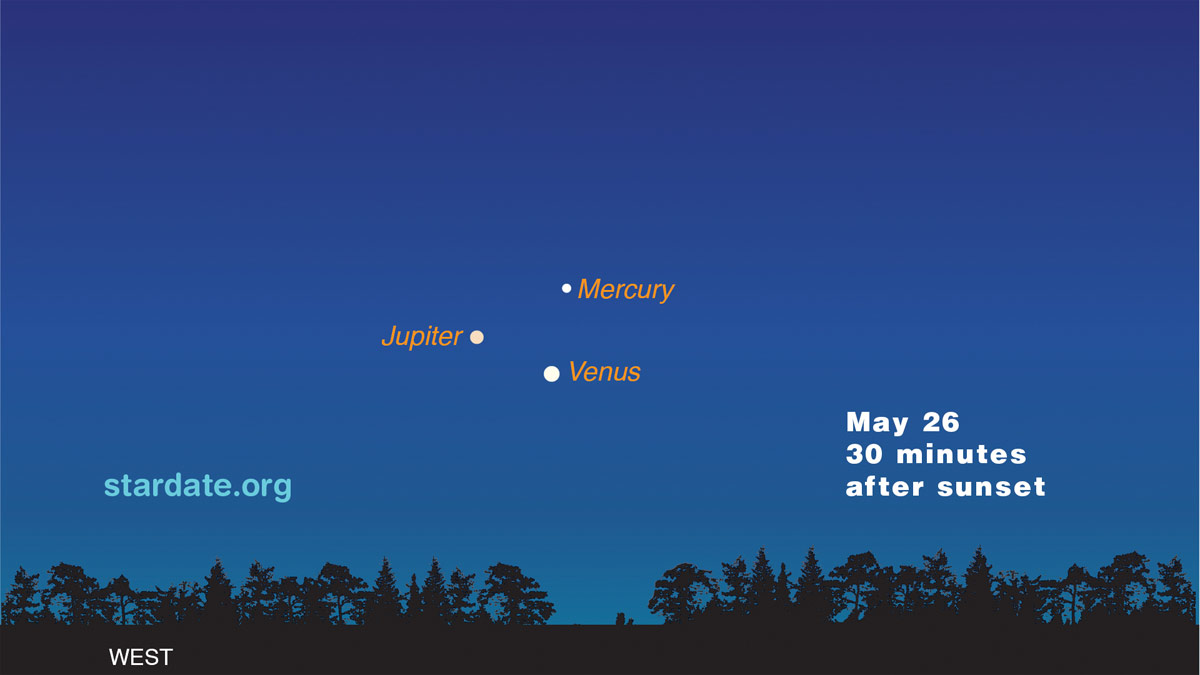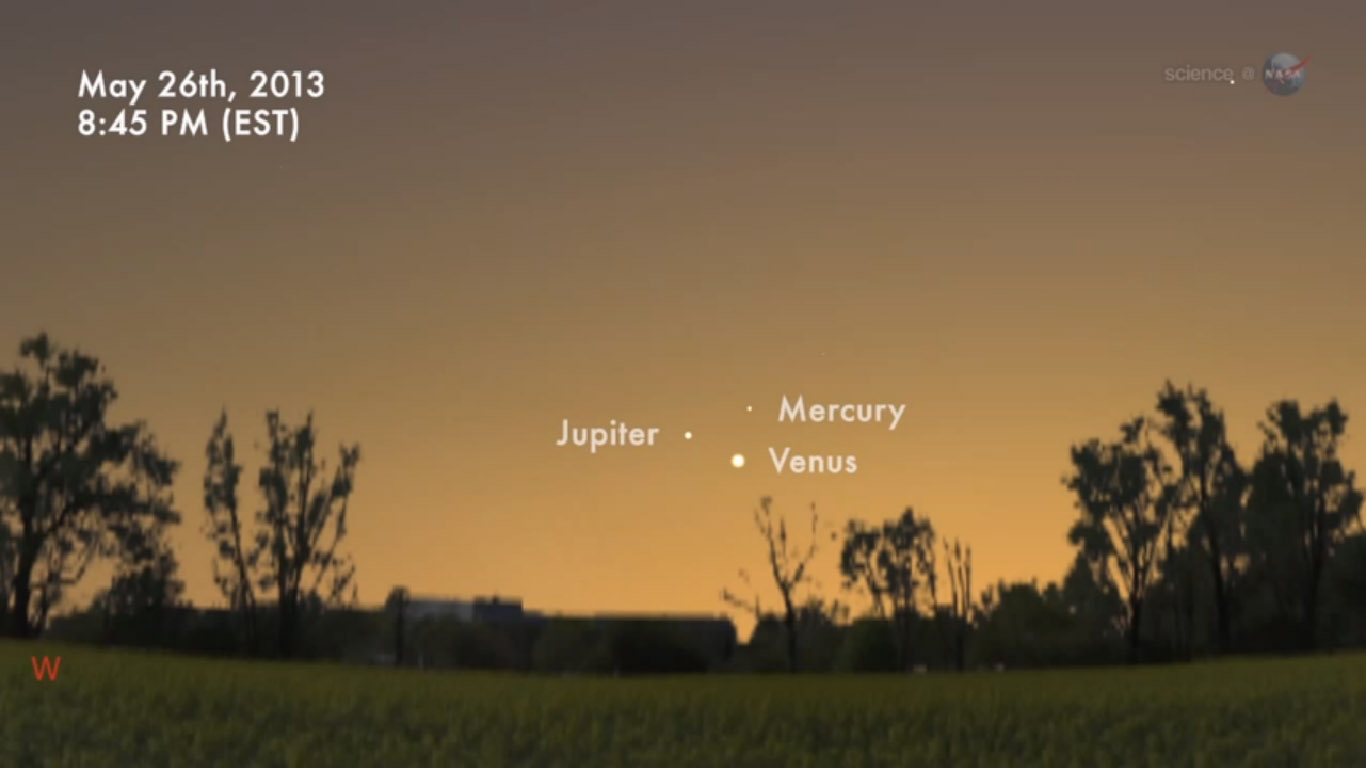Rare 3-Planet Sight Tonight: See Jupiter, Mercury and Venus Together

Three planets will perform a rare celestial dance in the sunset sky tonight (May 26), a cosmic show that stars Jupiter, Venus and Mercury.
Weather permitting, the three planets will shine together in a triangle formation low in the western sky in a planetary meet-up known as a conjunction. But there is more to the night sky sight than meets the eye.
"Triple conjunctions of planets are fairly rare," astronomer Tony Phillips explained in a NASA observing guide. "The last time it happened was in May 2011 and it won't happen again until October 2015."
What sets tonight's planetary show apart from other conjunctions is that it includes the three brightest planets visible in the May night sky. Venus is the brightest of the trio, with Jupiter a close second and Mercury coming in third.

The three planets will appear within a 3-degree field of the night sky and should fit inside the field of view of a typical set of binoculars. For comparison, your closed fist held out at arm's length covers about 10 degrees of the sky.
The best time to look for Jupiter, Venus and Mercury together is between 30 and 60 minutes after sunset. If you have clear weather, the planets will appear low on the western horizon, so an unobstructed view is vital.
The three planets have been closing in on one another for tonight's sky show over the last week, but if you miss them tonight don't fret. The planet trio will still be visible on Memorial Day Monday (May 27) as their triangle pattern begins to separate, Phillips wrote.
Get the Space.com Newsletter
Breaking space news, the latest updates on rocket launches, skywatching events and more!
On Tuesday (May 27), Venus and Jupiter will appear extremely close together, separated by just 1 degree, in what could be a "truly spectacular pair," Phillips added.
Editor's note: If you snap an amazing picture of the three planets or any other night sky view that you'd like to share for a possible story or image gallery, send photos, comments and your name and location to Managing Editor Tariq Malik at spacephotos@space.com.
Email Tariq Malik at tmalik@space.com or follow him @tariqjmalik and Google+. Follow us @Spacedotcom, Facebook and Google+. Original article on SPACE.com.
Join our Space Forums to keep talking space on the latest missions, night sky and more! And if you have a news tip, correction or comment, let us know at: community@space.com.

Tariq is the Editor-in-Chief of Space.com and joined the team in 2001, first as an intern and staff writer, and later as an editor. He covers human spaceflight, exploration and space science, as well as skywatching and entertainment. He became Space.com's Managing Editor in 2009 and Editor-in-Chief in 2019. Before joining Space.com, Tariq was a staff reporter for The Los Angeles Times covering education and city beats in La Habra, Fullerton and Huntington Beach. In October 2022, Tariq received the Harry Kolcum Award for excellence in space reporting from the National Space Club Florida Committee. He is also an Eagle Scout (yes, he has the Space Exploration merit badge) and went to Space Camp four times as a kid and a fifth time as an adult. He has journalism degrees from the University of Southern California and New York University. You can find Tariq at Space.com and as the co-host to the This Week In Space podcast with space historian Rod Pyle on the TWiT network. To see his latest project, you can follow Tariq on Twitter @tariqjmalik.









